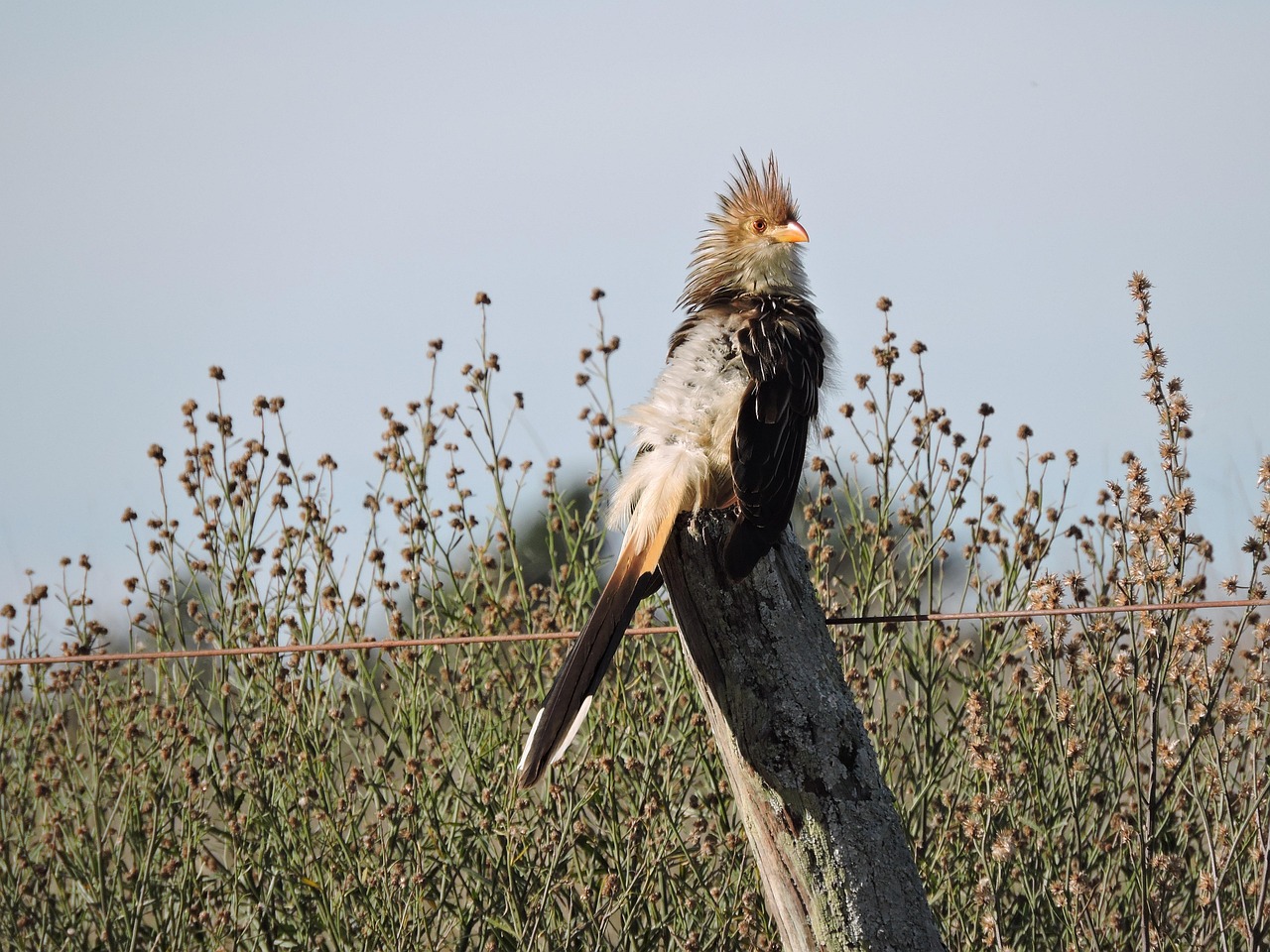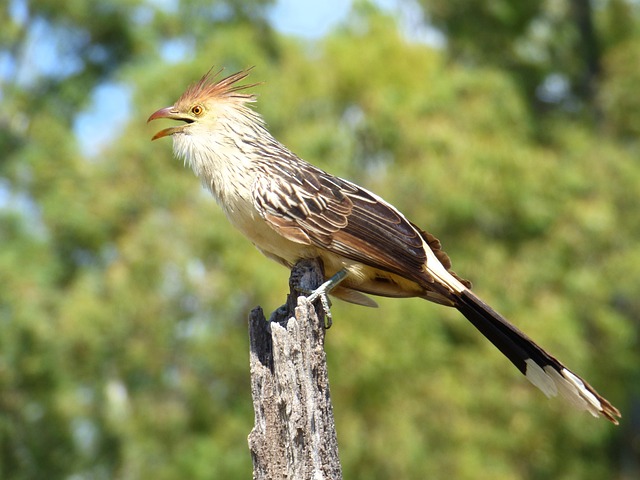In the open savannas and scrublands of South America, you might see a bird that looks like it just rolled out of bed after a very rough night. With a wild, spiky orange crest, a scruffy, streaked body, and a long, messy tail, the Guira Cuckoo (Guira guira) is the undisputed “punk rocker” of the bird world.
But this bird is more than just a “bad hair day.” It’s one of the most social, chaotic, and fascinatingly complex birds on the continent. While it’s a “cuckoo,” it’s not the lonely brood parasite you might be thinking of. This bird has a story all its own.
Here are 5 fascinating facts you probably didn’t know about the Guira Cuckoo.
1. They Are “Chaotic” Communal Nesters
This is the most incredible part of their story. Guira Cuckoos are not brood parasites (like their famous European relatives). Instead, they take the opposite approach: they are communal nesters.
This means multiple females—and sometimes an entire flock—will all lay their eggs in one single, massive, shared nest. The whole group then works together to incubate the eggs and raise the young.
But it’s not a perfect utopia. It’s a “chaotic” system.
-
Egg Tossing: Females have been seen tossing other females’ eggs out of the nest, likely to give their own offspring a better chance.
-
Accidents: In the jumble, they sometimes accidentally toss out their own eggs.
-
High Mortality: Because of the competition and chaos, egg and chick mortality in these “dump nests” is high. But the “all-hands-on-deck” approach to feeding and defense means the survivors are well-cared for.
2. They Hunt Like a Tiny Pack of Velociraptors
Don’t let the scruffy, almost-comical look fool you; this is a formidable predator. Guira Cuckoos are group foragers, and they are not just eating seeds.
They spend most of their time on the ground, hopping and running through the grass in a loose, noisy flock. As they move, they hunt like a tiny pack, snatching up anything that moves. Their diet is impressive:
-
Large insects (like grasshoppers)
-
Frogs and small lizards
-
Small snakes
-
Mice
-
The eggs and nestlings of other, smaller birds
Watching a group of 10 Guira Cuckoos systematically sweep a field is like watching a highly effective, if somewhat disorganized, hunting party.

3. They Huddle in a “Group Hug”
Guira Cuckoos are intensely social. They do everything together, and that includes sleeping and resting.
On cold mornings or during rainy weather, they are famous for huddling together in a tight, perfectly-aligned row on a single branch. This “group hug” isn’t just adorable; it’s a critical survival strategy. They press their bodies together to share warmth and conserve energy. It’s one of the most common and endearing sights for anyone traveling in their range.
4. Their Eggs Look Like Modern Art
You would expect a bird this unique to have unique eggs, and they don’t disappoint. A Guira Cuckoo’s egg is a work of art.
They are a beautiful dark blue-green, but they are covered in a chalky, white, web-like overlay. This spattered, “Jackson Pollock-esque” pattern is completely unique to each egg and helps the birds identify their own eggs in the chaotic communal nest (though, as we’ve seen, that doesn’t always stop them from tossing them).
5. Their “Bad Hair Day” Is Permanent (And It’s a Crest)
The Guira Cuckoo’s most defining feature is its wild, shaggy, orange-blond crest. This isn’t just messy-feathers; this is a permanent, structural part of the bird.
The name “Guira” even comes from the Guaraní language and means “bird.” This crest, combined with their loud, boisterous, and descending “whistling” calls, makes them one of the most charismatic and easily identifiable birds in South America. They are loud, scruffy, and proud of it.
Conclusion: A Master of Social Chaos
The Guira Cuckoo is a perfect example of how complex and weird bird behavior can be. It’s a bird that thrives on chaos, survives by a mix of cooperation and competition, and proves that you don’t have to look polished to be a master of your environment.
Have you ever been lucky enough to see a Guira Cuckoo? Share your experience in the comments below!


